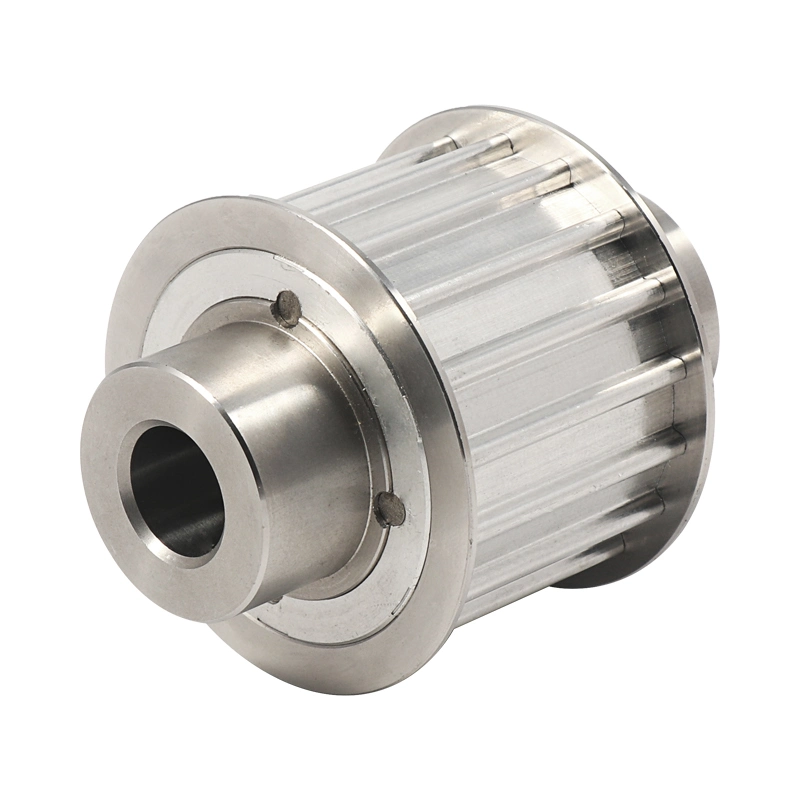HTD Pulley Technical Drawing
1. Introduction to HTD Pulleys
HTD (High Torque Drive) pulleys are integral components in various mechanical systems. These pulleys are known for their efficient torque transmission and high load-bearing capabilities, making them indispensable in industrial applications.
2. Basic Structure of HTD Pulleys
The basic structure of HTD pulleys comprises a hub, flanges, and teeth. The accuracy in the tooth profile is crucial for precise timing and torque transfer. These pulleys are typically made from materials like aluminum or steel to ensure durability and performance.
3. Importance of Technical Drawings
Technical drawings are essential for the accurate manufacturing of HTD pulleys. These drawings provide detailed dimensions, tolerances, and material specifications that ensure the pulley meets the required performance standards.
4. Creating Accurate Technical Drawings
Creating accurate technical drawings involves meticulous attention to detail. Engineers use advanced CAD software to design HTD pulleys, ensuring every dimension and tolerance is meticulously accounted for.
5. Dimensions and Tolerances
Dimensions and tolerances are critical in HTD pulley drawings. These specifications ensure that the pulley fits perfectly within the mechanical system, preventing slippage and ensuring optimal performance.
6. Material Specifications
Material specifications in HTD pulley technical drawings dictate the type of material to be used. Common materials include aluminum for lightweight applications and steel for high-strength requirements.
7. Surface Finish Requirements
Surface finish requirements are critical for the performance of HTD pulleys. A smooth surface finish reduces friction and wear, enhancing the efficiency and lifespan of the pulley.
8. Tolerances and Fits
Tolerances and fits ensure that HTD pulleys interface correctly with other components. These specifications prevent excessive play and ensure smooth operation within the mechanical system.
9. Geometrical Dimensioning and Tolerancing (GD&T)
GD&T is a system for defining and communicating engineering tolerances. It uses a symbolic language on engineering drawings and computer-generated three-dimensional solid models that explicitly describe nominal geometry and its allowable variation.
10. 3D CAD Models
3D CAD models provide a visual representation of HTD pulleys. These models are used for simulations and analyses, ensuring the pulley will perform as expected under various conditions.
11. Simulation and Testing
Simulation and testing are critical processes in the development of HTD pulleys. Engineers use simulation software to test the pulley¡¯s performance under different loads and conditions, ensuring it meets the required specifications.
12. Prototyping and Manufacturing
Prototyping and manufacturing are essential steps in bringing HTD pulleys to market. Prototypes are created to test the design and ensure it meets all performance criteria before full-scale production begins.
13. Quality Control
Quality control is critical in the manufacturing of HTD pulleys. Rigorous testing and inspection ensure that each pulley meets the required standards for performance and durability.
14. Assembly and Integration
Assembly and integration involve incorporating HTD pulleys into mechanical systems. This process requires precise alignment and secure fastening to ensure optimal performance.
15. Maintenance and Troubleshooting
Maintenance and troubleshooting are essential for the longevity of HTD pulleys. Regular inspections and timely repairs prevent failures and ensure the pulley continues to perform efficiently.
16. Industrial Applications
HTD pulleys are used in a wide range of industrial applications. From manufacturing to automotive, these pulleys provide reliable and efficient power transmission.
17. Automotive Applications
In the automotive industry, HTD pulleys are used in timing systems, ensuring precise synchronization of engine components. This results in improved engine efficiency and performance.
18. Manufacturing Applications
In manufacturing, HTD pulleys are used in conveyor systems and automated machinery. These pulleys provide reliable and efficient power transmission, ensuring smooth operation of the production line.
19. Robotics and Automation
Robotics and automation systems heavily rely on HTD pulleys for precise motion control. These pulleys ensure accurate and reliable movement of robotic arms and other automated components.
20. Aerospace Applications
In aerospace applications, HTD pulleys are used in various aircraft systems. Their high strength and precision make them ideal for critical applications where reliability is paramount.
21. Customization and Special Requirements
Customization and special requirements are often necessary for HTD pulleys to meet specific application needs. Custom pulleys can be designed and manufactured to exact specifications, ensuring optimal performance.
22. Cost Considerations
Cost considerations are important in the design and manufacturing of HTD pulleys. Efficient design and manufacturing processes can help reduce costs without compromising on quality and performance.
23. Environmental Considerations
Environmental considerations in the design and manufacturing of HTD pulleys are crucial. Sustainable materials and processes can help minimize the environmental impact, contributing to a greener future.
24. Future Trends in HTD Pulleys
Future trends in HTD pulleys include advancements in materials and manufacturing technologies. These trends aim to improve the performance, durability, and efficiency of HTD pulleys.
25. Conclusion
HTD pulleys are critical components in various industries, providing reliable and efficient power transmission. With advancements in technology, these pulleys continue to evolve, offering improved performance and durability.

HTD Pulley Usage Scenarios
HTD pulleys find applications in a variety of scenarios, ensuring efficient power transmission in various mechanical systems. Their versatility and reliability make them a preferred choice in diverse industries.

About Our Company
Our company is a leading player in the pulley market in China. We specialize in manufacturing high-quality HTD pulleys, plastic pulleys, timing pulleys, belt idler pulleys, belt pulleys, V pulleys, compound pulleys, and heavy-duty pulleys. With over 300 sets of fully automatic CNC production equipment and fully automatic assembly equipment, we ensure the highest quality and performance in our products. We offer competitive prices and excellent service. Customers are welcome to provide drawings and samples for customization.
